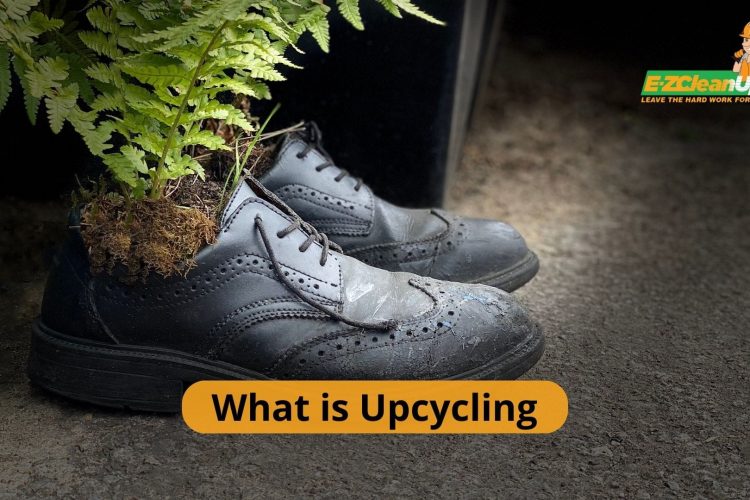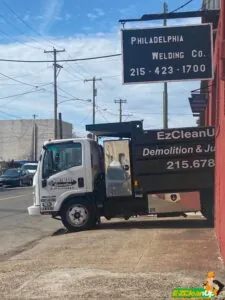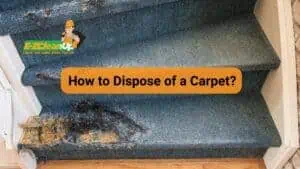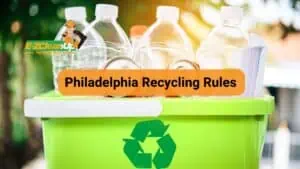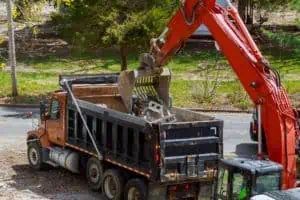Upcycling is the method of converting waste materials, by-products, or unwanted items into new products of higher quality or value than the original. It’s an innovative approach to reducing waste by giving old materials a new life.
Curious to know more about what is upcycling and how to make the most out of what you might consider “junk”? Continue reading to discover the wonders of upcycling.
Recycling vs. Upcycling
Upcycling is about creative reuse. It’s taking an item that’s no longer needed or wanted and turning it into something that provides increased value. Unlike recycling, which breaks down products to their raw materials, upcycling “re-fashions” the existing item, enhancing its value and utility.
Upcycling’s prominence has roots in literature as well. The term “upsizing” was first presented in Gunter Pauli’s 1998 book, which was subsequently titled “Upcycling” in 1999. This idea was later integrated into “Cradle to Cradle: Remaking the Way We Make Things,” a 2022 influential publication by Michael Braungart and William McDonough.
According to them, upcycling’s primary objective is capitalizing on existing materials, thereby stopping the consumption of fresh raw materials in the production of new items. This approach not only conserves resources but also mitigates energy use, air and water pollution, and greenhouse gas emissions.
How to Upcycle
Start by identifying items you no longer need. Instead of throwing them away, brainstorm how they can serve a new purpose. With a little imagination and effort, even seemingly useless objects can find a new life. More than just a trend, upcycling stands out as one of the best ways to deal with items you’d otherwise consider junk. Take note that upcycling can be as simple or as complex as you make it.
An Alternative to Traditional Disposal
As many countries around the world push towards sustainability, upcycling stands out as one of the best choices for managing junk. Rather than discarding or resorting to conventional recycling methods, upcycling provides a means to breathe new life into old items. It gives junk renewed purpose and value while you do your share in protecting the environment.
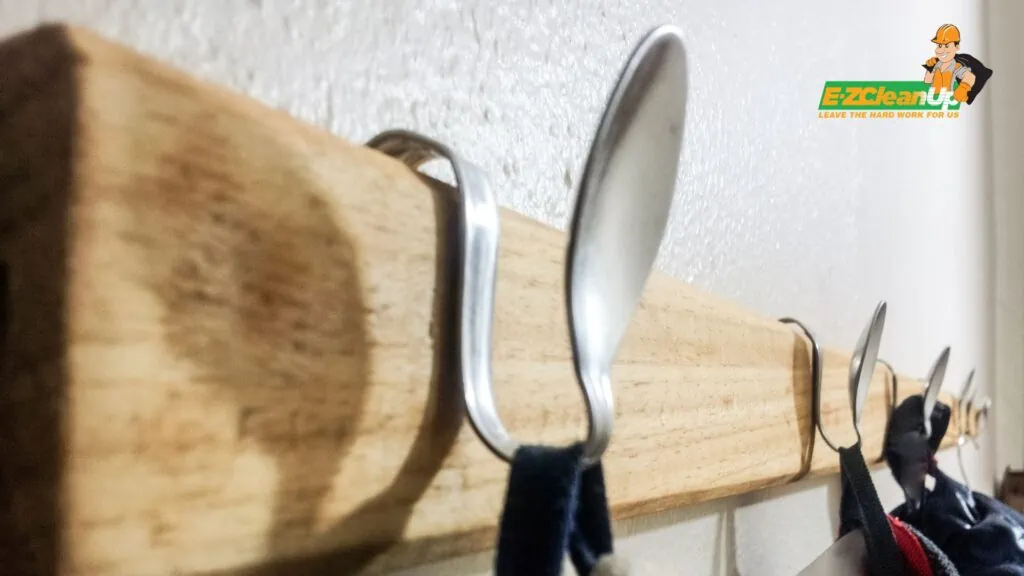
Upcycling Ideas
Now that you understand what upcycling is about, it’s time to get your creative juices flowing. Let’s begin with the ideas that you can do at home. From our wardrobes to our living rooms, there are countless opportunities to repurpose and revamp:
1. Home Decor
- Glass Jars. Instead of discarding empty jam or sauce jars, transform them into chic storage containers, vases, or candle holders. Decorate them with paint, ribbons, or lace for a personalized touch.
- Old Ladders. An old wooden ladder can become a trendy shelf. Lean it against a wall and use its steps to display plants, books, or decorative items.
2. Kitchen
- Wine Corks. Collect wine corks and turn them into a functional bulletin board or a unique mat.
- Tin Cans. Painted or covered with decorative paper, old tin cans can serve as stylish utensil holders or plant pots.
3. Garden
- Pallets. Wooden pallets can be converted into vertical gardens, benches, or even tables. They’re sturdy, easy to work with, and can be painted or stained to match your garden decor.
- Old Tires. Painted in vibrant colors, tires can become planters or even parts of a playful garden swing.
4. Personal Accessories
- Old T-shirts. Instead of throwing away worn-out shirts, turn them into trendy tote bags, scarves, or even braided jewelry.
- Outdated Jewelry. Disassemble old jewelry pieces to create new, modern designs or combine them for a statement accessory.
5. Office
- Cardboard Boxes. Reinvent cardboard boxes as stylish storage solutions by wrapping them in decorative paper or fabric.
- Old Books. Hollow out an old book to create a hidden storage box or stack several together to make an innovative side table.
Upcycling for Every Skill Level
You don’t have to be an experienced crafter to try upcycling. Beginners can upcycle clothing or start with simple projects like decorating jars. As you gain confidence and skills, you can try your hands at larger projects like furniture transformation. The key is to start somewhere and enjoy the process of giving old items a new purpose.
Upcycling Ideas for Beginners
- Button Magnets. Collect all those spare buttons you’ve been saving. Glue them onto small magnets, and you have customized fridge magnets.
- Fabric Napkins. Old clothes, especially those made of cotton or linen, can be cut into squares and hemmed to make reusable napkins.
- Jar Herb Garden. Use empty jars to plant herbs. Label each one with chalk paint or a marker, and you’ve got a mini herb garden for your kitchen.
Intermediate Upcycling Ideas
- T-Shirt Quilt. Gather old shirts, especially those with sentimental value, and sew them together to create a cozy quilt or throw blanket.
- Wine Crate Shoe Storage. Take wine crates, paint or varnish them, and stack them horizontally in your entryway for a rustic shoe storage solution.
- Denim Potholders. Old jeans can be cut and sewn into durable potholders. Add a loop from the hem of the jeans to hang them up.
Advanced Upcycling Ideas
- Pallet Coffee Table. Disassemble wooden pallets, sand down the planks, and construct a unique coffee table. Add wheels on the bottom for mobility and a glass top for a polished look.
- Suitcase Chair. Convert an old, hard-shell suitcase into a quirky chair. Attach wooden or metal legs, and pad the interior with foam and fabric for the seat.
- Record Clock. Take an old vinyl record and install a clock mechanism in the center. It’s a perfect blend of retro and functional art.
Other Upcycling Creative Ideas
Once you have gotten the hang of the process, you can try more innovative upcycling ideas, such as the ones listed below:
- Bathtub Couch. An old clawfoot tub can be cut and transformed into a vintage couch. Upholster the interior, and you’ve got a statement piece of furniture.
- Bicycle Wheel Pot Rack. Hang a bicycle wheel from the ceiling and use S-hooks to hang pots, pans, and utensils.
- Sewing Machine Base Table. The ornate metal bases of old sewing machines can be combined with wooden or glass tops to create elegant tables.
- Rain Boot Planters. Instead of discarding worn-out rubber boots, fill them with soil and plants to create colorful and quirky planters.
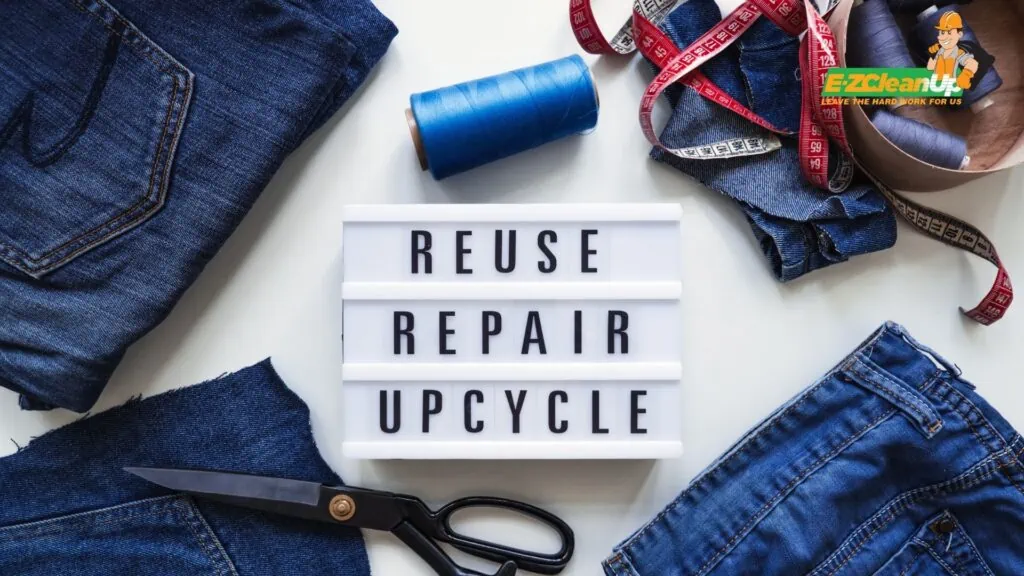
Materials You’ll Need for Upcycling
Here’s a guide to the essential materials you’ll likely need, common items that can be repurposed, and tips on sourcing and using them.
Basic Upcycling Materials
Paint and Brushes
Paint is going to be handy, whether it’s for reviving an old piece of furniture or adding a splash of color to a decor item. Always have a selection of brushes on hand, from wide brushes for large surfaces to detailed brushes for intricate designs.
Glue and Adhesives
A good-quality, multi-purpose adhesive is essential. Depending on the project, you might also need specialized glues, like fabric or wood glue.
Scissors and Cutting Tools
You’ll need a sharp pair of scissors when cutting fabric or breaking down cardboard. For tougher materials, a utility knife or even a saw might be necessary.
Sandpaper
Especially useful for furniture projects to smooth surfaces before painting or staining.
Fasteners
This category includes nails, screws, bolts, and even staples. They’re crucial for joining materials together.
Commonly Repurposed Items
Glass Jars and Bottles
These can be transformed into storage containers, vases, or decorative lanterns.
Old Clothing
You can upcycle clothing in many ways, from being turned into rags and quilts to being repurposed as bags or pillow covers.
Wooden Pallets
Highly versatile, pallets can become anything from furniture to garden planters.
Tin Cans
With a bit of creativity, these can serve as pencil holders, planters, or lanterns.
Cardboard
Beyond just a recycling material, cardboard can be used for creating organizers, crafts, and even furniture.
Sourcing and Using Materials
Rummage at Home
Before buying anything, check what you already have at home. Old boxes, unused furniture, or discarded clothing can be upcycled.
Visit Thrift Stores
It’s a must for upcyclers to check out these stores. Aside from materials, you can also find items to upcycle directly.
Collect Responsibly
If you’re sourcing materials like wood or metal, ensure they’re free from harmful chemicals or paints.
Storage
Organize and store your materials so you can easily find them when inspiration strikes. Clear storage boxes or labeled bins work well.
Clean Materials
Clean items like bottles or jars and make sure they’re free from residues before upcycling.
Safety First
Wear gloves, masks, or goggles as needed when working with tools or chemicals.
Upcycling in Fashion
Upcycled fashion breaks away from the concept of disposable clothing. It values quality and sustainability over fast fashion’s fleeting trends. It emphasizes garments that are both stylish and environmentally responsible.
Designers are focusing on the uniqueness of pre-used materials and creating one-of-a-kind pieces that have a story to tell. Meanwhile, consumers are also becoming eco-conscious. Modern shoppers are choosing upcycled fashion as a way to look good while feeling good about their choices.
Incorporating Upcycled Clothing into Your Wardrobe
- Thrifted Transformations. Visit thrift stores and look for pieces that, with a little alteration, could fit your style. For example, a long dress can be turned into a chic mini, or an oversized blazer can be tailored to fit perfectly.
- DIY Accessories. Old jeans can be turned into trendy tote bags, or fabric scraps can be braided into belts and bracelets.
- Upcycled Patches. Worn-out areas on favorite garments can be covered with fabric patches to make a fashion statement.
- Customized Footwear. Shoes can get a fresh look with fabric, paint, or even by replacing laces with ribbons or beads.
Upcycling Tips for Fashion
- Always check the quality of the material: Even if a piece is being upcycled, it needs to be durable.
- Learn basic sewing skills: Simple stitches can help modify or repair garments.
- Upcycling can be trial and error:. If a project doesn’t work out, it’s okay. Every mistake is a learning opportunity.
- Follow sustainable fashion blogs and YouTube channels, join DIY groups, and attend upcycling workshops to keep the creativity flowing.
Upcycling Furniture
Furniture adds character and functionality to our spaces. Yet, every year, countless pieces are discarded, contributing to environmental waste. Upcycling furniture offers an exciting solution to this problem.
Upcycling gives old furniture new life. This environmentally-friendly approach can result in unique, bespoke items that reflect personal style and sustainable values. From rustic and vintage to modern and minimalist, upcycling can cater to various design preferences. It also often proves more affordable than buying new, especially when aiming for quality and durability. Plus, there’s the added value of creating a one-of-a-kind piece.
DIY Projects for Repurposing Old Furniture
- Drawer Garden Planters. Old chest of drawers? Don’t discard them! Instead, fill each drawer with soil and plants for a tiered garden display.
- Crib to Desk Transformation. Remove one side of an outgrown crib, adjust the mattress height, and you have a workspace ready.
- Luggage Coffee Table. Attach legs to an old suitcase, and it becomes an innovative coffee table with built-in storage.
- Door Dining Table. A discarded door, with its panels and character, can make for a unique tabletop. Secure it onto a set of table legs, and you’ve got a conversation piece.
- Reupholstering Magic. Give chairs and sofas a fresh look by updating the fabric. A vibrant print or a muted, modern tone can change the entire aesthetic.
Tips on Choosing the Right Pieces for Upcycling
- Check that the frames are solid, especially for items like chairs and tables.
- While some wear and tear can be fixed, extensive damage might be beyond repair. It’s essential to be realistic about what you can achieve with your skills and resources.
- Before starting, have a clear idea of what you want to achieve. Sketching a design or creating a mood board can help guide the process.
- If you’re investing time and effort into upcycling, ensure the paints, fabrics, and other materials you use are of good quality.
- Upcycling furniture requires a mix of skills. Take advantage of online tutorials and workshops to enhance your skills.
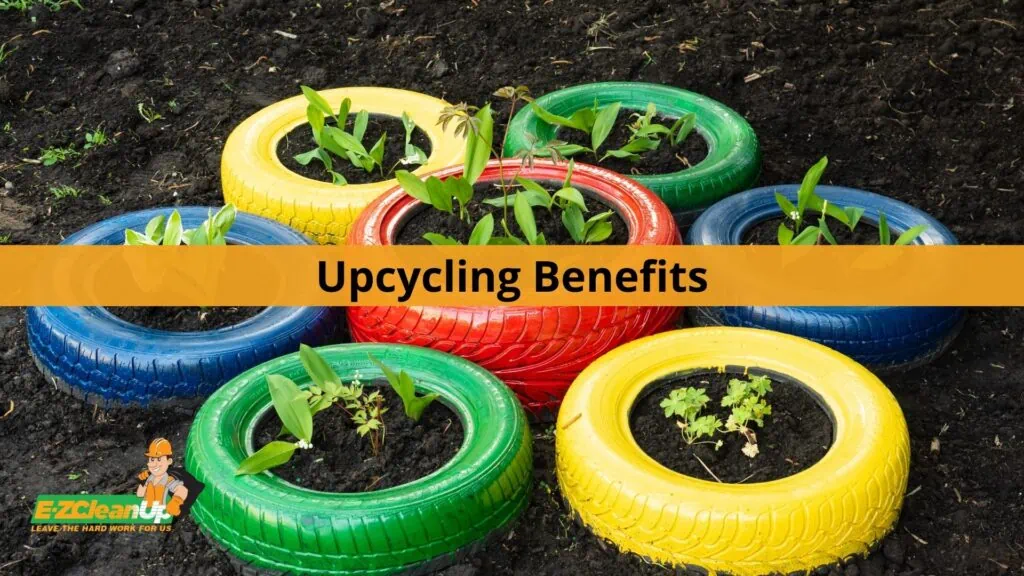
Upcycling Benefits
Beyond the appeal of unique, personalized items, upcycling presents many benefits that address pressing environmental and economic concerns.
Environmental Benefits of Upcycling
Reduction of Waste
One of the most immediate benefits of upcycling is the decrease in items that end up in landfills. By repurposing discarded objects, the volume of waste is substantially reduced.
Conservation of Resources
Creating new products demands raw materials. Upcycling, on the other hand, reuses materials that are already in circulation.
Decreased Pollution
The production of new items often involves processes that emit pollutants. Upcycling, by bypassing these processes, results in fewer emissions and a decrease in the overall carbon footprint.
Reduction in Energy Usage
Manufacturing fresh products consumes energy. Upcycling bypasses many energy-intensive stages of production. This means savings in energy and a reduction in greenhouse gas emissions.
Protection of Ecosystems
When the demand for raw materials decreases due to upcycling, it positively impacts ecosystems that might otherwise be harmed by mining, logging, or other extractive activities.

Economic Benefits of Upcycling
Cost Savings
Upcycling can be a more affordable alternative to buying new items. Whether it’s furniture, clothing, or decor, repurposed items can offer both style and functionality at a fraction of the cost.
Job Creation
The upcycling movement has paved the way for numerous small businesses and entrepreneurial ventures. Craftsmen, artists, and even workshops focused on upcycling skills provide employment opportunities.
Supporting Local Economies
Many upcycling initiatives are grassroots and community-based. Supporting these ventures ensures money remains within local economies.
Extended Product Lifecycles
Upcycled products often combine parts from various sources, which can lead to a more durable final product. This longevity means consumers need to replace items less frequently.

Upcycling vs Remanufacturing
While both processes aim to give new life to used or discarded items, they have distinct methods and objectives.
Remanufacturing is the process of restoring used or worn-out products to like-new condition. It involves dismantling, repairing, replacing parts, and reassembling. Products are typically disassembled to their component level. Worn or obsolete parts are replaced or refurbished, and then the product is reassembled.
The outcome of remanufacturing is a product that functions as good as a new one and adheres to original performance standards. It often comes with warranties similar to those of new products. Some examples include refurbishing electronic devices like smartphones or laptops and restoring automotive engines.
Key Differences Between Upcycling and Remanufacturing
While upcycling aims to add value or find a new purpose for an item, remanufacturing focuses on restoring the original function of a product.
Material Use
Upcycling often employs creativity to transform an item without a complete overhaul, whereas remanufacturing involves rigorous processes to replace or restore components.
Quality and Standards
Remanufactured products adhere to specific quality and performance standards, equivalent to new products. In contrast, upcycled products are unique and might not have standardized metrics of quality.
Economic Implication
Remanufacturing often taps into established markets, with products competing alongside new items. Upcycled products cater to niche markets, often valued for their artisanal or one-of-a-kind nature.
Turn Clutter Into Craft: Your Next Step in Upcycling
Upcycling is more than just a trend; it’s a movement towards resourcefulness, creativity, and conscientious living. Its goal is to breathe new life into old items, reduce waste, and contribute to a sustainable and eco-friendly lifestyle.
If you find yourself with items that might not be suitable for upcycling or if you need assistance clearing out spaces to kickstart your upcycling projects, we can make your work easier without spending a fortune.
We at EZ CleanUp clear up your junk and help you sort through your things so you can plan which ones can be upcycled and which ones you want to dispose of. Whether it’s a big project or you only want to haul away a few items, we’re the right junk removal company to call. With us, you will only need to pay for the space your junk occupies in our truck (not the whole truck).
What does this mean? A clearer space at an affordable cost.
Call us now to book our free on-site estimate. You can also choose to schedule a same-day junk pick-up if you’re in a hurry to get your hands on your upcycling tasks!

